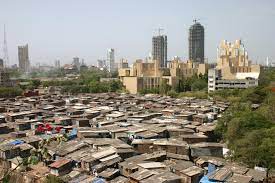Sehrish Habib
Urbanization process today has entered an unprecedented era. Nowadays In urban areas squatter settlements continue to rise dramatically. A huge increase in migration of people from rural to urban areas, people resort their living in slum areas as the housing in the city is beyond their affordability. The settlements of dislodgments and reconstruction is ostracized and bungling. This has the result that in cities often face multiple social problems like poor living conditions and economic instability. For example, Mehrabadi in Islamabad isan illegal land occupation, and houses are constructed with mud and a wide trash land. They have refused to give up their land to the Capital development authority (CDA), and they demolishedthe tenant houses and shops many times. Therefore they fail to improve their livelihood and are also unable to prevent the advent of squatter settlements. Theresidents in this area are primarily Afghan refugees and Christiancommunities.There are several issues inthis shantytown area related to housing, but the most alarming problems are; inadequate water supply management and development resources are risk factorsfor different diseases.The local class is forced to find alternative water resources, which they usuallybring on bikes or children bring on their heads. According to community health studies,in 2017, 2.5million death occurred due to diarrhea, of which 50% of the country’s diseases and 40% of death occurred due to contaminated water in Pakistan.
The illegal nature of squatter settlement dwellers is excluded from the standard delivery services as they don’t have a proper resident address and other valid documents. Likewise, there is nofacility for gas supply, and people usually usegas cylinders which is costly for the poor fragment of society. They also use wood for cooking food, and in cold weather for heat purposes, they are more concentrated on economic benefits rather than health benefits. Similarly, the region lacks suitable housing designs. Most of the population lives in mud houses,and high residential rent is difficult for daily wagers. Open drains, intolerable pungent smells, poor waste disposal systems, and no proper sanitation system generate most of the diseases. They face multiple health issues like allergies, cholera, dysentery, Hepatitis A, typhoid, malaria,and other diseases from dirty air and smoke of burning wood lead to asthma and coughing. Mismanagement of healthcare staff to work in slum areas create more problems, most of the health facilities are privately owned,and costly medicine is not within reach of poor people in this area.
Besides this, in squatter settlements, dwellers’ education is the most serious problem because a significant portion of the population is poor. Young people and child labor to do odd jobs to financially contributeto their family needs.There is also the problem of education institutions, the existing schools having no proper infrastructures and well-trained/educated teachers. Even due to gender biases,and the unavailability of schools,most girls are out of school. Parents are also uneducated and have no awareness ofthe education system, which further creates difficulties for children’s education. The other reason is parents cannot afford the expense of school for their children because most of them are daily wagers, and women are working as a maid in different houses to fulfill their basic necessities. Therefore, children in this area start begging,most of whom are child laborers. All these issuesare considered the cancerous part of cities that not only bring higher crimes but also traps its residents in eternal deprivation.
For sustainable integration of squatter settlements into cities, a systematic approach must be adopted. Policies to strengthen the squatter settlements and planning, financing and regulations must be formed to overcome these problems. Firstly, the government should take action on the illegal occupation of land. Destroying squatter settlements is not the solution while resulting it hurt the economy and displacement many poor dwellers.Government should introducea proper housing scheme witha reasonable rent system for these communities andfocus on the poor living conditions and economic instability.Secondly,squatter settlement up-gradation projects in different cities could help informal settlement and achieve urban transformation, which is crucial for formal urban settlement. This could be achieved through Local government,NGOs,and Civil society.Thirdly for sustainable integration and management of squatter settlements,NGOs and academic institutions should be focused on social security and essentialservices along with the supply of water, health, sanitation, waste management, energy services, and arrangement of education facilities must be provided.
In sum, the problem of squatter settlements settlement could be solved if they are integrated and accepted. The squatter settlements must be transformed in the urban regeneration process to achieve economic bounciness and social cohesion to make it convenient for the lower income class. If no innovative measures are taken, the situation will be problematic.
Sehrish Habib is a Research Assistant at the Pakistan Institute of Development Economics (PIDE)



